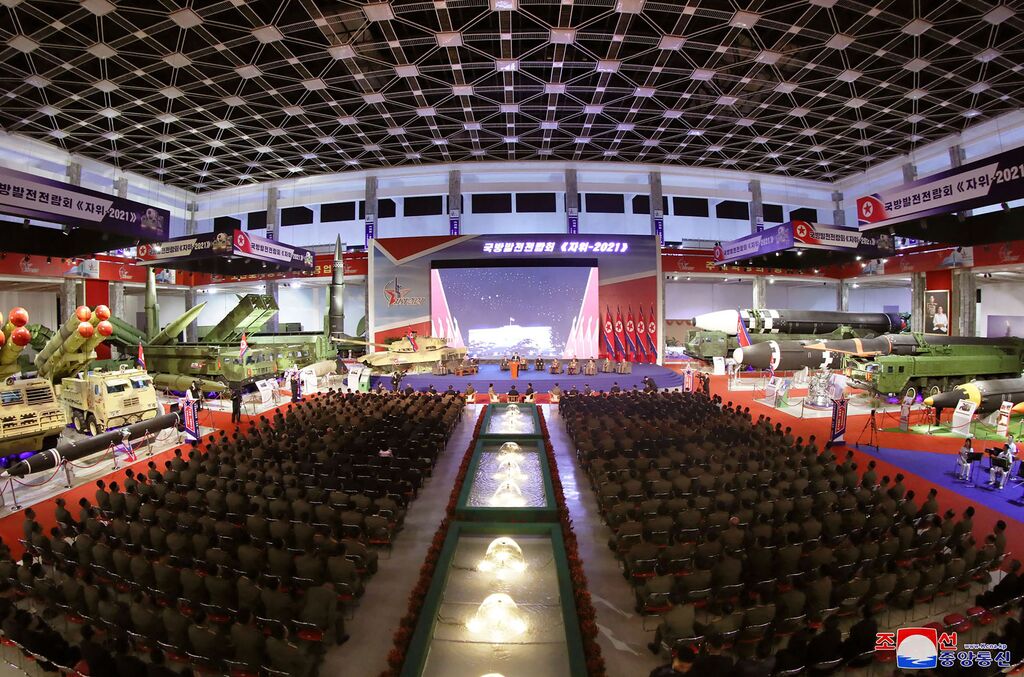Commentary
2021 / 10 / 18 (月)
ROLES INSIGHTS No.2021-01: “Understanding Military Modernization: It’s All about Effects” by Ryo Hinata-Yamaguchi


Today, military modernization is taking place at a remarkable pace, with a variety of technologies including, but not limited to: next-generation ground, naval, and air platforms; stealth; robotics; hypersonic weapons; directed-energy weapons; cyber weapons, artificial intelligence; quantum computing; radars and sensors; electromagnetic spectrums; and many others.
Still, while the technologies mentioned above are undoubtedly critical, discussions on military modernization often become over-captivated by the technological aspects. The truth is that military modernization is not simply driven by technological developments but rather by strategic and tactical demands. Since the dawn of civilization, humans explored various ideas for more effective and efficient ways to win wars. Thus despite the importance of next-generation technologies, much more attention is needed on the concepts and doctrines, as well as organizational management that are critical to military readiness.
The importance of operational and tactical concepts and doctrines, as well as organizational management in military modernization have been claimed by various scholars and strategists. Take for example, arguments by Michael Evans, who argued that, “modern armies need to find an optimum balance between technology, doctrine and organizational methods at all levels of war. Without adequate doctrine and organization to meet the demands of information systems, warfighting methods risk becoming narrowly delimited by new weapons technology.”
The importance of concepts and doctrines in military modernization lead to some important points. Although no one can doubt the significance of high-end capabilities, we must also not forget other aspects that are also critical. In particular, one area of significant importance is the ability to gain an asymmetric edge over qualitatively and quantitatively superior opponents by executing tactics and operating weapons that shift the point of engagement, and/or are difficult to penetrate and defend against.
Discussions on asymmetric warfare often focus on tactics employed by militaries and militias with limited resource capacity, underdeveloped organizational nature, and limited strategic scope. For such militaries and militias, asymmetric warfare is the cost-effective and rational choice, allowing them to exploit cheaper systems and personnel costs with decentralized networks and operations, as well as tactical flexibility. The effects are clear, with guerilla operations and tactics, and also cost-imposing measures that are hard to detect, identify, locate, track, and decapitate, leading to logistically expensive “whac-a-mole” scenarios and various vulnerabilities.
History has proven the lethality of asymmetric warfare, where in cases like the Vietnam War, militaries and militias who are fluent in asymmetric tactics have been extremely effective in disrupting and penetrating the vulnerabilities of technologically superior counterparts. Of course, there are also weaknesses. For example, the effects of asymmetric tactics are limited to particular areas (e.g. ground, littoral, cyber and electronic), and are unsuited in open areas such as the high seas or in the air where there are little or no places to hide. Moreover, technologies still matter in both defense and deterrence, where regardless of how one may master asymmetric warfare, they cannot substitute the power projection nor the firepower of heavy-duty, high-end platforms such as attack and fighter aircraft, blue-water naval capabilities, ballistic and cruise missiles, weapons of mass destruction, and so forth.
But asymmetric warfare is not exclusive to irregular conflicts and small or underdeveloped armies. When looking at military modernization, the operational and tactical values of asymmetric warfare have always been one of the key drivers of technological innovation. After all, technologies are applications of knowledge, meaning that military innovation is not simply about advancements in technologies but the advancements in the use of assets for advantageous effects.
One does not need to look far to find weapons designed for asymmetric effects, including, but not limited to: submarines, mines and booby traps, camouflage and stealth, cyber warfare capabilities, and many others. Likewise, there will be new themes that would serve as drivers of future weapons systems. While there is no end to listing all the possible types of weapons that would emerge, some trends are already evident. One example is miniature weapons with much less visibility but greater maneuverability. Although such technologies would have less clout compared to high-end systems, they would be of critical value for: precision attacks on, and disruption of infrastructures and platforms; assassinations; as well as intelligence, reconnaissance, and surveillance operations.
At the same time, new and emerging technologies would also evolutionize asymmetric warfare. For example, artificial intelligence systems and quantum computing could calculate and suggest certain asymmetric tactics as the most effective means to engage the enemy, or ways to effectively engage the adversary that is employing asymmetric operations and tactics.
The importance of asymmetric effects has significantly influenced military modernization plans in the Indo-Pacific. One unique trend is seen in states that pursue a mix-and-match of both modern platforms and asymmetric use of existing platforms. The most prime example is North Korea, where the Korean People’s Army’s genes have long centered on the mixture of regular and irregular warfare. As a result, North Korea has devised a range of ways to use even dated technologies for asymmetric operations but have also pursued high-end weapons including a variety of ballistic and cruise missiles, ballistic missile-launch capable submarines, drones, as well as cyber and electronic warfare platforms.
China also presents an interesting case, where despite the remarkable technological modernization, the emphasis on hybrid warfare suggests that irregular operations would remain to be a part of its strategies, including the application of asymmetric tactics to its modernized capabilities. While much is to be seen in how the developments unfold, there is little doubt that China will present new concepts and doctrines in modern warfare that warrants greater attention and concern in the regional security context.
Other advanced states are leaning toward asymmetric means to overcome their quantitative or sometimes qualitative weaknesses. For example, the rapid modernization of the People’s Liberation Army is now overwhelming Japan, leading to the demand for new capabilities but also asymmetric means such as naval mine and submarine warfare, as well as utilization of unmanned systems. Similar developments are also seen in other developed states such as South Korea and Taiwan where they face challenges in effectively and efficiently mounting sufficient levels of military readiness against the threats they face.
The above-mentioned trends highlight the importance of looking at militaries according to not only their shapes and sizes, but also how their assets will be employed. The diverse developments create significant complexities and uncertainties going forward. While there may be no major changes to the military balance in the immediate term, there will be new complexities, with greater tensions in gray zone situations, multilateral military modernization and arms races, and an increase in small-scale conflicts due to the withering of conventional forms of deterrence.
Do we fight wars because we have weapons? Or do we have weapons because we fight wars? History tells us that it is the latter. As long as conflicts occur, militaries will pursue technologies that bring the best effects to win, rather than blindly chasing the newest gadgets.
***********************************************
***********************************************
Ryo Hinata-Yamaguchi is a Project Assistant Professor at the Research Center for Advanced Science and Technology at the University of Tokyo and an Adjunct Fellow at the Pacific Forum. Ryo can be followed on Twitter at @tigerrhy.
同じカテゴリの刊行物
コメンタリー
2025.07.01 (火)

